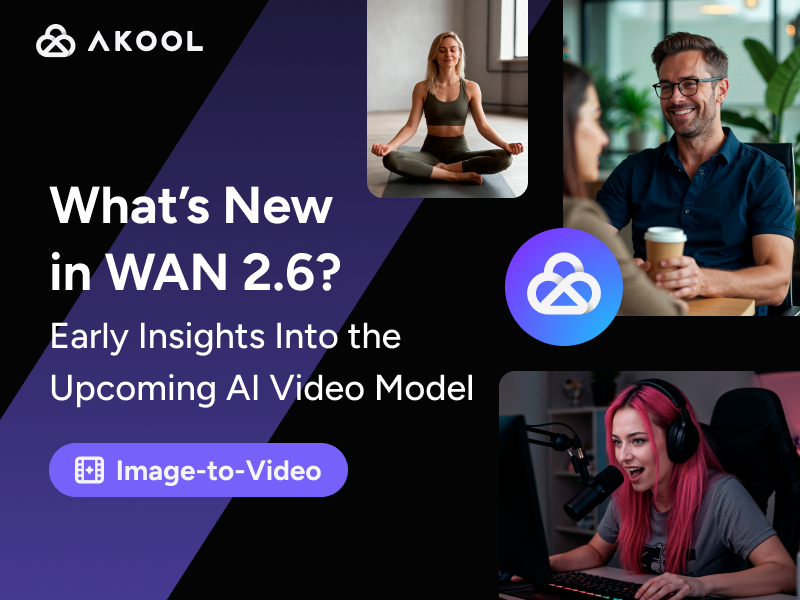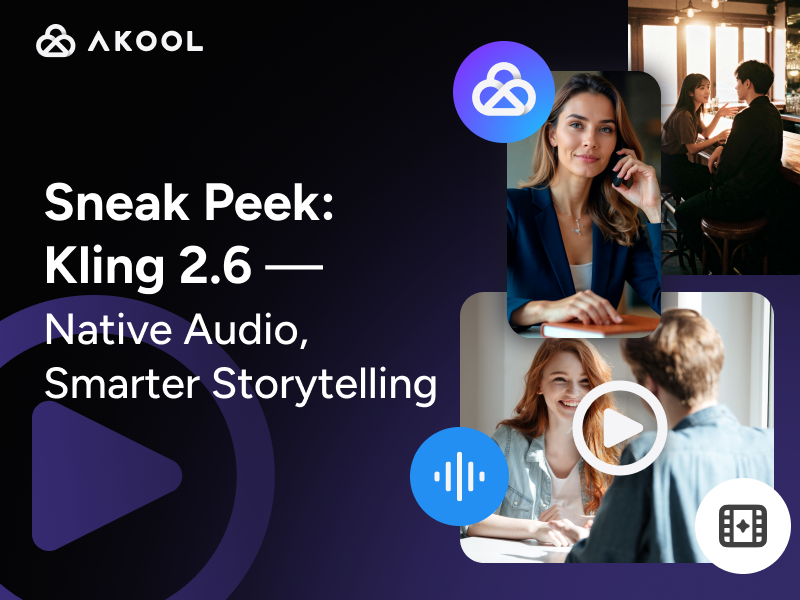Understanding AI for Identifying High-Potential Employees
AI for identifying high-potential employees harnesses machine learning algorithms to analyze vast datasets, pinpointing key traits and performance indicators. By evaluating skills, behaviors, and past achievements, AI predicts an employee's future success. Creators and agencies can leverage AI in Human Resources to streamline talent spotting, ensuring a strategic fit. This technology augments traditional methods, offering a data-driven approach to optimize workforce potential.
How to Use AI for Identifying High-Potential Employees
Leveraging AI to identify high-potential employees involves a structured approach that combines data, algorithms, and strategic insights. Here’s a concise guide to using AI effectively in your talent management processes:
1. Define Clear Objectives
- Identify Key Metrics: Determine what constitutes "high potential" in your organization. This could include leadership skills, creativity, adaptability, or specific performance indicators.
- Set Goals: Decide what you aim to achieve with AI, such as improved succession planning or enhanced employee development.
2. Data Collection
- Gather Relevant Data: Collect data from various sources, including performance reviews, project outcomes, employee feedback, and skill assessments.
- Ensure Data Quality: Clean and preprocess the data to remove inconsistencies and fill in any missing information.
3. Feature Selection
- Identify Important Features: Choose the variables that are most relevant to predicting employee potential, such as past achievements, skill levels, and engagement scores.
- Formulate Hypotheses: Consider how these features might correlate with future success. For more on this, explore Predictive HR Analytics.
4. Choose the Right AI Tools
- Select Algorithms: Use suitable machine learning algorithms like decision trees, neural networks, or support vector machines based on your data complexity and objectives.
- Utilize AI Platforms: Consider platforms that offer pre-built models and customization options for talent management, similar to those used in AI Resume Screening.
5. Model Training and Testing
- Train the Model: Use historical data to train your AI model, allowing it to learn patterns and make predictions.
- Validate Accuracy: Test the model with separate data sets to ensure it accurately identifies high-potential employees.
6. Implementation and Monitoring
- Integrate AI Insights: Use AI-generated insights to inform decisions about promotions, training programs, and career development paths.
- Monitor Continuously: Regularly update the model with new data to refine its accuracy and relevance over time.
7. Ethical Considerations
- Ensure Fairness: Check for biases in data and algorithms to ensure fair and equitable treatment of all employees. Utilize AI Tools for HR to maintain fairness.
- Maintain Transparency: Keep the AI processes transparent to build trust among employees and stakeholders.
By following these steps, creative agencies and creators can effectively harness AI to discover and nurture high-potential employees, aligning talent management with strategic business goals.
Applications of AI for Identifying High-Potential Employees
AI for identifying high-potential employees is transforming talent management across industries. Here's how it's applied:
| Application | Description |
|---|---|
| Predictive Analytics | AI algorithms analyze past performance, skills, and behaviors to predict future success. |
| Skill Gap Analysis | AI tools assess current employee skills against industry standards, highlighting areas for development. |
| Employee Engagement | AI tracks engagement metrics like participation in projects and feedback scores. |
| Succession Planning | Evaluating employee performance and potential, AI aids in planning leadership pipelines. |
These applications streamline talent identification, enabling creative agencies to nurture and retain top talent effectively.
Technical Insights into AI for Identifying High-Potential Employees
Data Collection and Preprocessing
AI systems collect data from employee records, performance metrics, and feedback. Preprocessing involves cleaning and organizing this data, ensuring consistency and accuracy for analysis.
Feature Engineering
Machine learning models require feature engineering to identify relevant variables. These features may include skills, achievements, behavioral traits, and performance history, which are crucial for predicting potential.
Algorithm Selection
Various algorithms, such as decision trees, neural networks, or support vector machines, can be employed. The choice depends on the complexity of data and the specific prediction goals.
Model Training
Training involves feeding the algorithm with historical data to learn patterns and correlations. The model adjusts its parameters to minimize prediction errors, enhancing its accuracy.
Validation and Testing
The model undergoes validation using separate data sets to ensure it generalizes well. Testing involves assessing the model's predictive performance in real-world scenarios.
Continuous Learning
AI systems continuously learn from new data inputs, refining predictions as more performance data becomes available. This dynamic learning process ensures models remain relevant and accurate over time.
| Technical Component | Description |
|---|---|
| Data Preprocessing | Involves cleaning and organizing data for consistency and accuracy. |
| Feature Engineering | Identifying variables crucial for predicting employee potential. |
| Algorithm Selection | Choosing suitable algorithms based on data complexity and prediction goals. |
| Model Training | Feeding historical data to algorithms to learn patterns and correlations. |
| Validation and Testing | Ensuring models generalize well with separate data sets. |
| Continuous Learning | Models adapt with new data, refining predictions over time. |
By integrating these technical components, AI effectively identifies high-potential employees, providing a robust framework for strategic workforce development.
Useful Statistics on AI for Identifying High-Potential Employees
AI technology is transforming the way organizations identify and nurture high-potential employees. Leveraging AI can streamline the talent identification process, making it more accurate and efficient. Here are some key statistics that highlight the impact and potential of AI in this domain:
- Increased Identification Accuracy:
- A recent study found that AI-assisted talent analytics can improve the accuracy of identifying high-potential employees by up to 25% compared to traditional methods.
Why it's useful: This increased accuracy ensures that organizations invest in the right individuals, thereby enhancing their leadership pipeline and reducing turnover rates among promising employees.
Time Efficiency:
- Companies that implemented AI-driven talent identification tools experienced a 30-40% reduction in the time required to identify high-potential employees.
Why it's useful: Time savings allow HR departments to allocate resources more effectively, focusing on development and retention strategies rather than lengthy evaluation processes.
Cost Reduction:
- Research indicates that AI can reduce the costs associated with the identification and development of high-potential employees by up to 20%.
- Why it's useful: Cost reduction is critical for maintaining budget efficiency while still investing in employee development, ultimately leading to a higher return on investment for talent management initiatives.
These statistics underscore the transformative potential of AI in enhancing organizational talent strategies. By adopting AI Recruiting Tools, creators, developers, and creative agencies can ensure they are identifying and nurturing the right talent, leading to sustained competitive advantage and innovation.
FAQ: AI for Identifying High-Potential Employees
What is AI for identifying high-potential employees?
AI for identifying high-potential employees is a technology that uses machine learning algorithms and data analytics to evaluate employee performance, skills, and potential, helping organizations identify individuals who are likely to excel in leadership roles or other key positions.
How does AI determine high-potential employees?
AI analyzes a variety of data points, including performance metrics, peer reviews, and behavioral patterns, to predict which employees have the potential for growth and leadership. This process involves sophisticated algorithms that can identify trends and insights that might not be visible through traditional assessment methods.
What are the benefits of using AI for talent identification?
AI-driven talent identification helps organizations make data-driven decisions, reduces bias in the selection process, and ensures a more objective evaluation of employees. This leads to better talent management, improved employee satisfaction, and a stronger leadership pipeline.
Can AI help reduce bias in identifying high-potential employees?
Yes, AI can significantly reduce bias by relying on data-driven insights rather than subjective opinions. However, it is crucial to ensure that the data used is unbiased and representative to avoid perpetuating existing biases.
How does AI improve employee development and retention?
By accurately identifying high-potential employees, AI enables targeted development programs and personalized career paths, which can lead to increased job satisfaction and retention rates. Employees are more likely to stay with a company that invests in their growth and recognizes their potential.
What types of data are used by AI to identify high-potential employees?
AI systems typically use a combination of quantitative and qualitative data, including performance reviews, skill assessments, engagement scores, and career progression history. This comprehensive data approach allows for a nuanced understanding of employee potential.
Is AI for identifying high-potential employees suitable for all industries?
Yes, AI for identifying high-potential employees is adaptable across various industries. While the specific data points and criteria may vary, the underlying principles of using AI to enhance talent management are applicable to any sector looking to optimize their workforce.
How secure is the data used in AI systems for employee identification?
Data security is a top priority in AI systems. Reputable AI service providers implement robust security measures, including encryption and access controls, to protect sensitive employee information and ensure compliance with data protection regulations.




